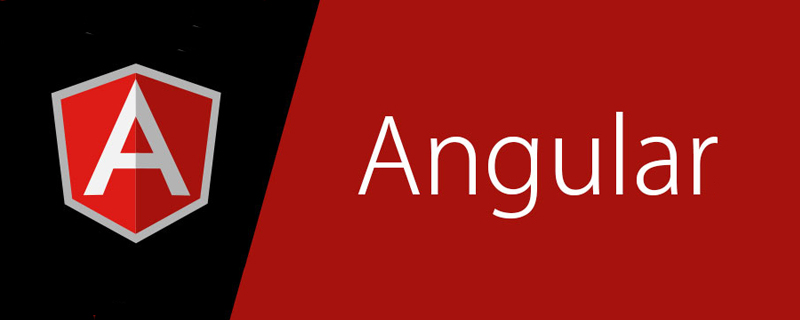 Web Front-end
Web Front-end JS Tutorial
JS Tutorial What is a decorator? Let's talk about how to use method decorators in Angular?
What is a decorator? Let's talk about how to use method decorators in Angular?What is a decorator? This article will introduce to you how to use method decorators in Angular. I hope it will be helpful to you!

Method decorator is not an exclusive feature of Angular. It also has this feature in es6. This article mainly introduces the use of method decorator in Angular. [Related tutorial recommendations: "angular tutorial"]
What is a decorator
In es6, decorator (Decorator) It is a syntax related to classes, used to annotate or modify classes and class methods; the decorator is actually a function that is executed during compilation. The syntax "@function name" is usually placed in front of the definition of classes and class methods. . There are two types of decorators: class decorators and class method decorators.
In Angular, the most common decorator is the @Component class decorator, and we can also add decorators to methods:

A decorator is a function, and a method decorator can be used to monitor, modify or replace the definition of a method
Advantages of using method decorators
As mentioned in the above function, the method decorator can be used to monitor, modify, or replace the definition of the method, so that we can flexibly use the layer of encapsulation it brings us to do many things.
The most common one is verification. We can encapsulate a method through this layer to perform unified permission verification. In this way, if permission verification needs to be added to any method, we only need to add this method. Decorator, without the need to repeatedly override the verification method.
Or there is unified pop-up window or prompt processing. For many different methods, unified prompt processing may be performed after execution, so that a method decorator can be added for unified processing.
In short, the method decorator is to encapsulate the unified logic of some methods, so that it can be reused when needed in the process of calling each method.
Usage of method decorator
The method decorator mainly has three input parameters
- target: Object - the object of the decorated class
- key: string - method name
- descriptor: TypePropertyDescript - property descriptor
import { Component, OnInit } from '@angular/core';
function log(target: any, key: string, descriptor: any) {
console.log(target);
console.log(key);
console.log(descriptor);
}
@Component({
selector: 'app-fn-test',
templateUrl: './fn-test.component.html',
styleUrls: ['./fn-test.component.scss']
})
export class FnTestComponent implements OnInit {
constructor() { }
ngOnInit(): void {
this.pay(2,3)
}
@log
pay(Price: number, count:number): number {
return Price*count
}
}

and method decoration can be subdivided There are two types, one is a method decorator that passes in parameters, and the other is a method decorator that does not pass in parameters.
No parameters are passed in
There is an attribute descriptor.value in the attribute descriptor, which is the decorated method. Through this method, we can get the incoming Parameters and function execution results:
function log(target: any, key: string, descriptor: any) {
let method = descriptor.value;
descriptor.value = function (...args: any[]) {
var result: any = method.apply(this, args);
console.log(`method:${key}, args:${JSON.stringify(args)}, return:${result}`);
return result;
}
}
Incoming parameters
In this case of incoming parameters, we need to wrap another layer outside the previous function , the outer function can get the passed in value, and the function returned by the inner layer is the same as the previous function without parameters, and can get three parameters:
function log(nowTime: Date) {
console.log(nowTime);
return function(target: any, key: string, descriptor: any){
let method = descriptor.value;
descriptor.value = function (...args: any[]) {
var result: any = method.apply(this, args);
console.log(`method:${key}, args:${JSON.stringify(args)}, return:${result}`);
return result;
}
}
}
export class FnTestComponent implements OnInit {
...
@log(new Date())
pay(Price: number, count:number): number { return Price*count
}
}
// Tue Jun 07 2022 18:48:22 GMT+0800 (中国标准时间)
// fn-test.component.ts:9 method:pay, args:[2,3], return:6
Summary
Through the method decorator, we can perform unified logical processing on the methods inside the class, which can reduce a large amount of unnecessary repeated code, and can also make the method simpler and greatly reduce the subsequent two steps. Secondary development costs.
For more programming related knowledge, please visit: Programming Video! !
The above is the detailed content of What is a decorator? Let's talk about how to use method decorators in Angular?. For more information, please follow other related articles on the PHP Chinese website!
 Angular学习之聊聊独立组件(Standalone Component)Dec 19, 2022 pm 07:24 PM
Angular学习之聊聊独立组件(Standalone Component)Dec 19, 2022 pm 07:24 PM本篇文章带大家继续angular的学习,简单了解一下Angular中的独立组件(Standalone Component),希望对大家有所帮助!
 angular学习之详解状态管理器NgRxMay 25, 2022 am 11:01 AM
angular学习之详解状态管理器NgRxMay 25, 2022 am 11:01 AM本篇文章带大家深入了解一下angular的状态管理器NgRx,介绍一下NgRx的使用方法,希望对大家有所帮助!
 项目过大怎么办?如何合理拆分Angular项目?Jul 26, 2022 pm 07:18 PM
项目过大怎么办?如何合理拆分Angular项目?Jul 26, 2022 pm 07:18 PMAngular项目过大,怎么合理拆分它?下面本篇文章给大家介绍一下合理拆分Angular项目的方法,希望对大家有所帮助!
 聊聊自定义angular-datetime-picker格式的方法Sep 08, 2022 pm 08:29 PM
聊聊自定义angular-datetime-picker格式的方法Sep 08, 2022 pm 08:29 PM怎么自定义angular-datetime-picker格式?下面本篇文章聊聊自定义格式的方法,希望对大家有所帮助!
 浅析Angular中的独立组件,看看怎么使用Jun 23, 2022 pm 03:49 PM
浅析Angular中的独立组件,看看怎么使用Jun 23, 2022 pm 03:49 PM本篇文章带大家了解一下Angular中的独立组件,看看怎么在Angular中创建一个独立组件,怎么在独立组件中导入已有的模块,希望对大家有所帮助!
 手把手带你了解Angular中的依赖注入Dec 02, 2022 pm 09:14 PM
手把手带你了解Angular中的依赖注入Dec 02, 2022 pm 09:14 PM本篇文章带大家了解一下依赖注入,介绍一下依赖注入解决的问题和它原生的写法是什么,并聊聊Angular的依赖注入框架,希望对大家有所帮助!
 Angular的:host、:host-context、::ng-deep选择器May 31, 2022 am 11:08 AM
Angular的:host、:host-context、::ng-deep选择器May 31, 2022 am 11:08 AM本篇文章带大家深入了解一下angular中的几个特殊选择器:host、:host-context、::ng-deep,希望对大家有所帮助!
 深入了解angular中的@Component装饰器May 27, 2022 pm 08:13 PM
深入了解angular中的@Component装饰器May 27, 2022 pm 08:13 PMComponent是Directive的子类,它是一个装饰器,用于把某个类标记为Angular组件。下面本篇文章就来带大家深入了解angular中的@Component装饰器,希望对大家有所帮助。


Hot AI Tools

Undresser.AI Undress
AI-powered app for creating realistic nude photos

AI Clothes Remover
Online AI tool for removing clothes from photos.

Undress AI Tool
Undress images for free

Clothoff.io
AI clothes remover

AI Hentai Generator
Generate AI Hentai for free.

Hot Article

Hot Tools

mPDF
mPDF is a PHP library that can generate PDF files from UTF-8 encoded HTML. The original author, Ian Back, wrote mPDF to output PDF files "on the fly" from his website and handle different languages. It is slower than original scripts like HTML2FPDF and produces larger files when using Unicode fonts, but supports CSS styles etc. and has a lot of enhancements. Supports almost all languages, including RTL (Arabic and Hebrew) and CJK (Chinese, Japanese and Korean). Supports nested block-level elements (such as P, DIV),

ZendStudio 13.5.1 Mac
Powerful PHP integrated development environment

Zend Studio 13.0.1
Powerful PHP integrated development environment

SublimeText3 Chinese version
Chinese version, very easy to use

Safe Exam Browser
Safe Exam Browser is a secure browser environment for taking online exams securely. This software turns any computer into a secure workstation. It controls access to any utility and prevents students from using unauthorized resources.






